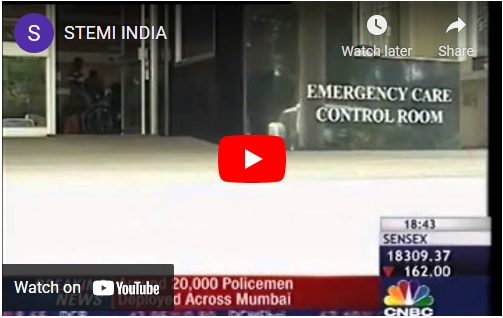Click Here to Download PDF Version

Telehealth Newsletter
Official Newsletter of Tamil Nadu Chapter of Telemedicine Society of India
TN – TSI invites all the TSI Chapters and Members to submit information on their upcoming Webinar or Events (50 words), News related to Telemedicine (200 words) or short articles (500 words) for the monthly e-newsletter. |
Registration for Telemedicine Online Course
Telemedicine Society of India runs regular courses on how to practice telehealth within the framework of ‘Telemedicine Practise Guidelines’ as notified by the Govt of India in the month of May 2020. Over 3500 doctors and other medical professionals have undergone the training so far. To know more about the course and view the feedback please visit https://tsi.org.in/learn
By registering here you would be able to book your space for the next available course. We are also in the process of starting a Speciality Course in Telehealth and will keep you updated if you are registered with us.
Click here to join ‘Train to Practise Telemedicine’ Course conducted by TSI.
Thank You.
Dr. Sunil Shroff
President – TN-TSI
National Telemedicine Day of TSI Celebrated Virtually
In view of the ongoing pandemic, an abridged program was conducted on 25th April virtually to commemorate the National Telemedicine Day of TSI. This was decided 20 years ago on 25th April 2001, during the 1st National Telemedicine Conference held at SGPGI Lucknow, to raise a Society to promote Telemedicine in India and to name it Telemedicine Society of India (TSI).
A panel discussion that included all the Past Presidents (Margdarshaks) was organised with the theme – ‘A Perspective of Journey of Two decades of Telemedicine Society of India & The Road Ahead.’
The discussion was aimed towards TSI’s contribution towards the global effort to promote Telemedicine, roadmap for progress and increased footprint of TSI.
Dr. Mahendra Bhandari who was the director at SGPGI during the launch of TSI joined from USA and shared his fond recollections from the past.
The presidents who joined included the following-
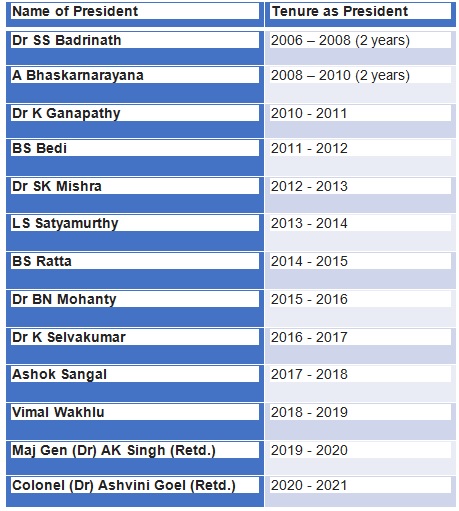
Dr. SS Badrinath, sent a short video of his tenure as he is not keeping well. Mr. A Bhaskarnarayana could not join. The discussion was moderated by Dr Sunil Shroff, President TSI (TN Chapter).
The following areas were discussed –
1. All the presidents shared – one impact area that they considered significant that led to growth of telemedicine during their tenure and one memory that they would always cherish of their tenure.
2. They all discussed the impact of emerging technologies in the domain of ‘Digital Health’ that would help with the evolution of Telemedicine.
3. Deliberations were made on the how TSI could play an active role and work with the Government for policies in the growth of telehealth in India.
4. TSI functioning was broadly discussed and included –
a. TSI’s role in keeping the Telehealth ecosystem safe in India.
b. How should state chapters of TSI evolve.
c. Should TSI start its own journal.
d. How should TSI professionalise its activities.
e. What should be the roadmap for next 5 to 10 years for TSI.
Welcome by Dr Ashvini Goel & Inauguration by Dr Mahendra Bhandari
Panel discussion with Presidents (Margdarshaks)
Theme – ‘A Perspective of Journey of Two decades of Telemedicine Society of India & The Road Ahead.’
Moderator: Dr.Sunil Shroff, President, TN-TSI
eSanjeevani – India’s National Telemedicine Service
Sh. Lav Aggarwal1, Dr. Sanjay Sood2 & Dr. P.K. Khosla2
1 Ministry of Health & Family Welfare, Govt. of India, New Delhi
2 Centre for Development of Advanced Computing, Mohali
eSanjeevani – National Telemedicine Service is a cutting-edge, indigenous telemedicine system that is not only bridging the rural-urban, digital health divide but is also provisioning health services for the Indian populace in the confines of their homes. eSanjeevani is an initiative of the Ministry of Health & Family Welfare, Govt. of India it has been developed and is being managed by the Health Informatics Group at the Centre for Development of Advanced Computing (C-DAC) in Mohali. eSanjeevani is providing telemedicine services in two variants: 1. eSanjeevaniAB-HWC: A Doctor-to-Doctor telemedicine system under Ayushman Bharat Scheme of Govt. of India at Health & Wellness Centres, to provision specialised health services in rural areas and isolated communities, and 2. eSanjeevaniOPD: a Patient-to-doctor, telemedicine system that is enabling people to get outpatient services in the confines of their homes.
In a very short span eSanjeevani has evolved into South-East Asia’s largest telemedicine service. Collectively, the eSanjeevani network is operational in 31 States, around 35,000 doctors and paramedics have been trained and onboarded, and around 18,000 Health and Wellness Centres (HWCs) have been enabled for telemedicine services across the country. 256 online OPDs have been set up on eSanjeevaniOPD. eSanjeevani telemedicine network is providing safe, contactless medical consultations without having the patient to travel to the doctors. eSanjeevani is supposedly India’s largest telemedicine service. In less than one-year eSanjeevani has served over 3.7 million patients and daily around 45,000 patients are served through eSanjeevani. Numerous premier institutions like AIIMS Bathinda, AIIMS Bibinagar, AIIMS Rishikesh, Lady Hardinge Medical College and Hospital, King George’s Medical University etc. are offering specialised services through eSanjeevani. This flagship telemedicine application of Government of India is in a continuous state of flux, it is being enriched on regular basis (with innovative concepts and flows) based on the feedback received from the State Administrations that are using eSanjeevani, and also on the basis of the directions of Ministry of Health & Family Welfare, Govt. of India.
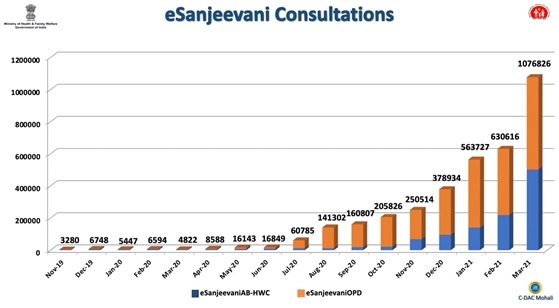
eSanjeevani is the first telemedicine platform that conforms to the Electronic Health Records Guidelines issued by the Ministry of Health & Family Welfare, Govt. of India. It being a cloud-based system, the system can be configured and expanded in no time. The telemedicine platform enables health administrators to efficiently utilise doctors in their team as the system permits health administrators to dynamically regulate doctors onboarding and offboarding in OPDs, based on the footfall. In eSanjeevani, the processes have been designed in such a way that patients do not need to wait for more than 15 minutes to get a medical consultation. As of now average patient waiting time in eSanjeevaniOPD is 8 mins 47 sec.
eSanjeevani empowers, doctors and patients additionally as it is also integrated with few healthcareIT applications that are being used in the States. eSanjeevaniAB-HWC is seamlessly (& wirelessly) integrated with a compact and integrated diagnostic device. It can gather over 30 medical parameters based on point of care tests (POCT) and rapid diagnostic tests (RDTs) besides the physiological parameters. eSanjeevani variants are available as web-apps (esanjeevani.in & esanjeevaniopd.in) and Android application of eSanjeevaniOPD is also available, it has been downloaded by over 500,000 users. The iOS version of eSanjeevanOPD is undergoing testing and soon it will be rolled out. With the launch of iOS based app of eSanjeevaniOPD, it is anticipated that the utilisation of eSanjeevani would grow further. At the moment over two-thirds of the consultations are being executed through mobile application. eSanjeevani is being readied to comply with the compliances specified by the National Health Authority in National Digital Health Mission of National Health Authority, Govt. of India.
In December 2020, at Digital India Awards 2020 eSanjeevani was adjudged as the country’s best innovation during pandemic and the award was conferred by Honb’le President of India. eSanjeevani has also been recognized by Computer Society of India, SKOCH Group and has won the Gem of Digital India Award. eSanjeevani is also amongst the front-runners at Govt. of India’s National Awards for eGovernance (NAeG).
Foundation Day CME “COVID-19 and Telemedicine”: Department of Telemedicine, PGIMER, Chandigarh
The foundation day CME for department of telemedicine was inaugurated by Prof Jagat Ram Director, PGIMER and Prof G D Puri Dean Academics, PGIMER.
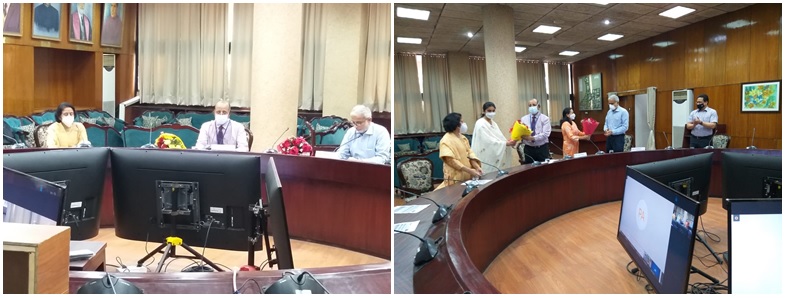
They congratulated Prof Meenu Singh Head, Department of Telemedicine on this occasion and appreciated all the work that has been done during the COVID – 19. Director emphasized on the importance of Telemedicine in this pandemic Scenario. This CME was chaired by distinguished dignitary, Dr K K Talwar health adviser Government of Punjab and Former Director, PGIMER.
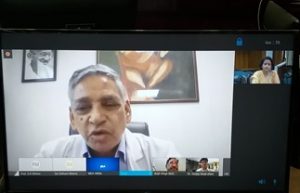
The CME was presided eminent speakers Dr Sanjay Sood, Project Director eSanjeevani who briefed the audience that during the past one year of esanjeevani OPD almost 2.6 million consultations have been provided. Through Various other Telemedicine platforms run by govt of INDIA consultations have touched the 4 million mark. E Sanjeevani provides both doctor to doctor as well as doctor to patient consultations.
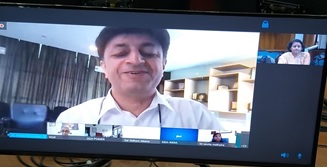
Dr Sood shed light on the future project such as SEHAT OPD, e Arogya Bharti and national HIV AIDS Telemedicine network which is first in the world.
The first panel discussion was chaired Dr Savita Malhotra Former Dean PGIMER and talks were given by Shri R K Saboo Past Rotary International Prident, Dr Vinayak M Prasad Senior Advisor, WHO, Geneva and Shri Anoop Kumar Gupta Principal Consultant, eVBAB Project, Ministry of External Affairs.
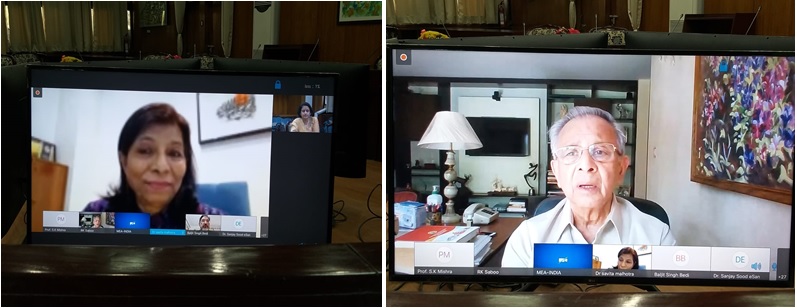
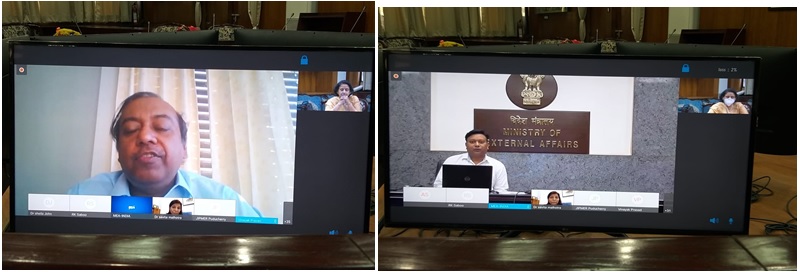
The discussion was centered on role of national and international Telemedicine agencies during the COVID-19 pandemic. The second Panel discussion was Chaired by Col. Dr. Ashvini Goel, President TSI and the speakers were Dr Sunil Shroff Foundation and Director MOHAN Foundation President TSI-Tamilnadu, Dr Murthy Remilla Hon. Secretary, TSI and Ms Bagmisikha Puhan Legal Expert technology Law Member EC TSI. The panel discussion was regarding Telemedicine practice guidelines


This followed talks by Dr Ravi Chittoria, Nodal Officer, Regional Resource Centre (Southern Region) JIPMER, Puducherry and Dr N. K Agarwal on Telemedicine activities in the NMCN project during COVID era and Clinical Application of Telemedicine respectively. This session was chaired by Dr S K Mishra Dean SGPGI Lucknow and Dr Biman Saikia from PGI Chandigarh.
 The CME concluded by a lecture on role of health informatics in healthcare given by Dr Nishant Jaiswal Research Associate HEHTA, Institue of Health and well Being, University of Glasgow. This session was charied by Dr Nusrat Shafiq PGI, Chandigarh and Dr BS Bedi, Advisor to CDAC. Dr Meenu Singh gave the concluding remarks and thanks to all the dignitaries for their supports and Dr Amit Agarwal for organizing and smooth functioning of the CME.
The CME concluded by a lecture on role of health informatics in healthcare given by Dr Nishant Jaiswal Research Associate HEHTA, Institue of Health and well Being, University of Glasgow. This session was charied by Dr Nusrat Shafiq PGI, Chandigarh and Dr BS Bedi, Advisor to CDAC. Dr Meenu Singh gave the concluding remarks and thanks to all the dignitaries for their supports and Dr Amit Agarwal for organizing and smooth functioning of the CME.
First use of the Prefix ‘Tele’ for Telemedicine
(History and Evolution of Telemedicine – 6th Milestone)
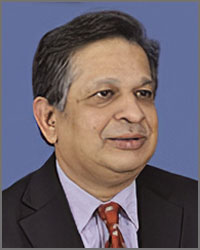
Dr. Sunil Shroff, MS, FRCS, Dip. Urol (Lond.)
President, Tamil Nadu Telemedicine Society of India,
Editor, www.medindia.net,
Consultant Urologist & Transplant Surgeon, Madras Medical Mission Hospital, Chennai, India (shroffmed@gmail.com).
The credit for using the prefix ‘Tele’ goes to the speciality of cardiology. In the earlier issue of the newsletter, the transmission of ECG over 1500 meters by Willem Einthoven, a Dutch professor of physiology (Telehealth Newsletter -Vol.1, Issue.2 Nov 2020) was covered. It was Einthoven who first to use this Latin prefix Tele to denote distant medical care and called it “telecardiogram”. He went on to publish this in 1906 in the journal “Archives Internationales de Physiologie” describing this experiment as the first tele-medical technology (Einthoven, 1906). After this over the years, several publications were made on the use of tele-ECG application that avoided the need for the patients to travel.
But it was M. Franke and W. Lipinski 1936 who published an article about clinical application and variations in tele-electrocardiogram of patients with infectious diseases (in particular with scarlet fever and diphtheria). They invented the Franke-Lipinski tele-cardiological system and helped patients to avoid travel. Franke said in an article, “keeping the patient in one place allowed avoiding adverse events, associated with the patient’s transportation.” This was more required for patients with infectious diseases where remote monitoring was required. They also felt that it could be applied for critically ill patients on ventilation and this was the first indication of the use of telemedicine for intensive care.
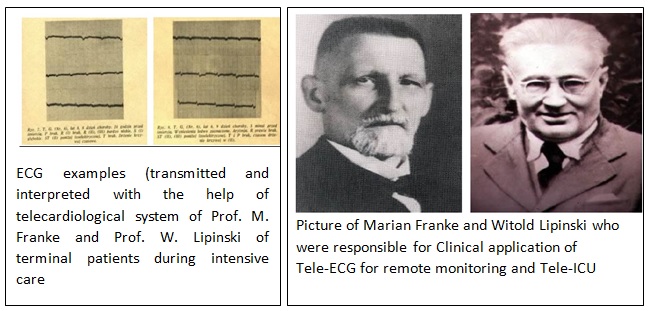 In 1980 E. Sh. Halfen, said “One of the characteristic features of medicine of our time is authoritative, irresistible penetration of mathematics and cybernetics into medicine” He determined three main lines for tele-ECG application (Halfen E., 1980; 1985; 1974; 1977; 1980 a; 1980 b; 1980 c; Khramov A. et al., 1996):
In 1980 E. Sh. Halfen, said “One of the characteristic features of medicine of our time is authoritative, irresistible penetration of mathematics and cybernetics into medicine” He determined three main lines for tele-ECG application (Halfen E., 1980; 1985; 1974; 1977; 1980 a; 1980 b; 1980 c; Khramov A. et al., 1996):
1. Clinical medicine (including rural health care, emergency medical service, large enterprises, sanatoria, etc.);
2. Mass preventive onsite screening examinations (combined with automated ECG analysis);
3. ECG patient-activated transmission (auto-transmission) during outpatient treatment.
And between 1972 and 1979 about 250 000 ECGs were transmitted in Saratov region.
Today India’s own STEMI project is an advanced application of remote monitoring through ECG transmission to reverse the fatal ST Elevation Myocardial Infarction (STEMI). This is a clinically a challenging condition that requires prompt intervention. In Tamil Nadu alone there have been over 2,400 early interventions in the last few years. The National Commission on Macro-economics and Health has projected the evolving epidemic of coronary artery disease in India. There were 60 million patients with coronary heart disease in the year 2015 with a yearly mortality close to 3 million. A substantial number of these were due to acute STEMI or the delayed consequences of STEMI. If the project is implemented nationally and connected to the 108 State Ambulance services it can save millions of lives.
Reference-
1. A Century of Telemedicine:Curatio Sine Distantia et Tempora by- Anton Vladzymyrskyy, Malina Jordanova, Frank Lievens
2. Telehealth Newsletter – Vol.1, Issue.2 Nov 2020
3. https://www.stemiindia.com/
Telemedicine – News from India & Abroad
India
India’s First Artificial Intelligence-based COVID Testing Facility at IGI Airport
India’s first Artificial Intelligence (AI)-enabled COVID testing facility for international passengers has commenced operations at Terminal 3 of the IGI Airport. The facility under the Garuda brand name is owned by AI company Thalamus Irwine.….. Read More
International
How innovations in digital health are opening new doors in healthcare system
Technological advancements and innovation have played a big role in connecting people to healthcare professionals, allowing them to get the healthcare attention they need, especially during the COVID-19 pandemic..….. Read More
Companies That Are Taking Telemedicine By Storm
When Covid-19 struck, the use of telemedicine exploded. At Los Angeles-based UCLA Health, for example, the average number of telehealth visits went from roughly 100 to 3,000-4,000 per day between March and May 2020. Companies include – 1. Teladoc, 2. Livongo, 3. Navigating Cancer, 4. 98point6, 5. 23andMe & 6. Amazon.. Read More
World’s First 5G Disinfection Robot Removes Bacteria On The Go
The world’s first 5G-based disinfection robot automates anti-infection efforts against COVID-19 in health care facilities.….. Read More
New Model Predicts Spread of Covid-19
New model has been developed by scientists that helps predict the spread of covid-19. At first, a fragile, temporary state of immunity emerged during the early epidemic. Later, it got destroyed when people started changing their social behaviors leading to another wave of covid-19 infection..….. Read More
Editors reserve the rights for accepting and publishing any submitted material.
TN – TSI invites all the TSI Chapters and Members to submit information on their upcoming Webinar or Events (50 words), News related to Telemedicine (200 words) or short articles (500 words) for the monthly e-newsletter. |
Editor in Chief – Dr. Sunil Shroff
Editors – Dr. Senthil Tamilarasan & Dr. Sheila John
Technical Partner- www.medindia.net

